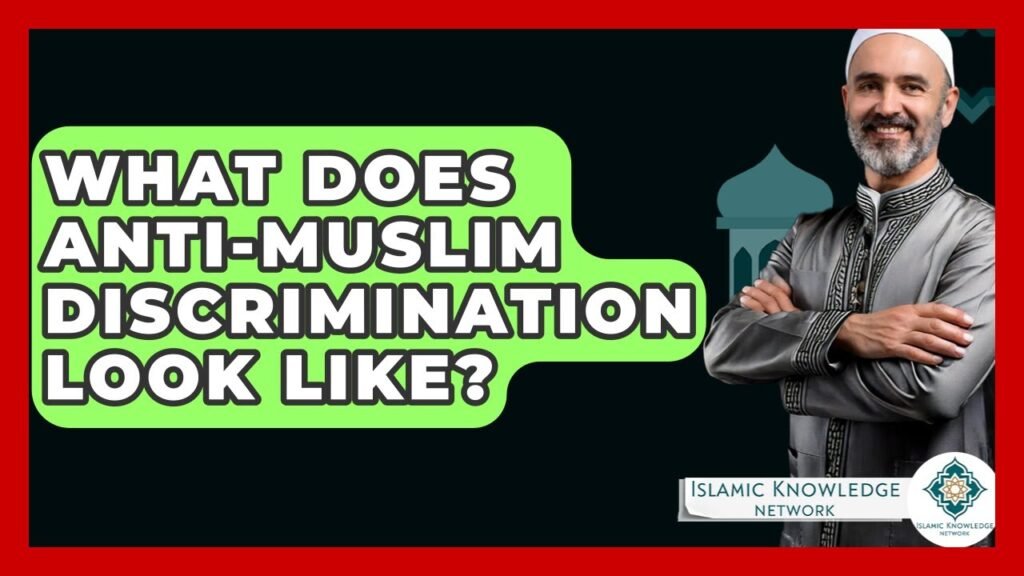You are here to read: What Does Anti-Muslim Discrimination Look Like Today? – A Thoughtfully Written Guide Offering Spiritual Wisdom and Travel Advice for Every Pilgrim who is going on holy journey of Hajj or Umrah.
In an increasingly interconnected world, understanding the intricacies of discrimination is crucial, especially as it relates to religion. Anti-Muslim discrimination manifests in various forms, from overt acts of hate to subtle biases that permeate social interactions, workplace environments, and policy decisions. Our exploration of “What Does Anti-Muslim Discrimination Look Like?” aims to shed light on the numerous ways that this form of bigotry can impact individuals and communities, particularly in a global context where Islamophobias can affect perceptions and relationships.
At Airlink Hajj and Umrah, we believe that religious understanding goes hand in hand with the pilgrimage experience. Our commitment to fostering a comprehensive understanding of Islamic practices is evident not only in our updates on Hajj and Umrah but also in various social topics like discrimination. As we delve into the manifestations of anti-Muslim sentiment, we also invite our readers to engage meaningfully with our blog, where you’re encouraged to learn about the latest updates and experiences regarding Hajj and Umrah. Join us in promoting a more inclusive dialogue that respects and honors every faith, enriching the spiritual journey of Muslims worldwide.
What Does Anti-Muslim Discrimination Look Like Today?
Anti-Muslim discrimination manifests in various forms, impacting many aspects of daily life for individuals who identify as Muslim. In many communities, Muslims face social exclusion, often leading to a sense of isolation. This can include avoidance in social settings or being subjected to negative stereotypes that fuel prejudice and intolerance. Such discrimination can significantly affect mental health and community cohesion, undermining the rich cultural contributions of Muslim communities.
In workplaces, anti-Muslim bias can translate into unfair hiring practices or workplace harassment. Studies show that many Muslims have experienced discrimination when seeking employment or promotions. This detrimental climate not only stifles professional growth but also perpetuates economic disparities within the larger society.
Furthermore, public spaces are also not immune to anti-Muslim sentiment. Incidents of verbal or physical harassment, especially towards women in hijabs, are increasingly reported. It’s vital to foster greater understanding and inclusivity to combat these harmful attitudes.
At airlinkhajjandumrah.com, we provide essential updates about Hajj and Umrah, promoting a deeper understanding of the Muslim experience. By raising awareness about the discrimination that Muslims face today, we hope to encourage dialogue and promote unity within diverse communities.
You're at the middle of this awesome post at AirlinkHajjandUmrah.com through: What Does Anti-Muslim Discrimination Look Like Today?. Keep reading, it gets better!
FAQ on What Does Anti-Muslim Discrimination Look Like Today?
FAQs: What Does Anti-Muslim Discrimination Look Like Today?
1. What are common forms of anti-Muslim discrimination?
Anti-Muslim discrimination can manifest in various ways, including verbal harassment, hate crimes, workplace discrimination, and biased media representation. It can also involve social exclusion and negative stereotyping.
2. How do anti-Muslim attitudes affect individuals in daily life?
Individuals may experience fear, anxiety, and isolation, impacting their mental health. They might also face challenges in accessing employment, housing, and social services due to prejudice and discrimination.
3. Are there legal protections against anti-Muslim discrimination?
Yes, various laws protect individuals from discrimination based on religion. In many countries, including the United States, there are federal and state laws that prohibit discrimination in employment, housing, and public accommodations.
4. How does social media contribute to anti-Muslim discrimination?
Social media often amplifies hateful rhetoric and misinformation about Muslims, leading to increased polarization. It can serve as a platform for hate speech and cyberbullying, affecting public perceptions and inciting real-world violence.
5. What can communities do to combat anti-Muslim discrimination?
Communities can promote inclusivity by organizing interfaith dialogues, raising awareness about Muslim cultures, supporting victims of discrimination, and advocating for stronger anti-discrimination laws to foster understanding and tolerance.
That wraps up What Does Anti-Muslim Discrimination Look Like Today?. Thanks for sticking with us till here! Share this: What Does Anti-Muslim Discrimination Look Like Today? with your friends.
Check our homepage at Air Link Hajj & Umrah for more awesome updates.
Some interesting posts are: 1: Umrah Mubarak, 2: When is Umrah closed 2026?, 3: When does Umrah start after Hajj 2026?
Mushu, an experienced Saudi Arabia traveler and writer, shares insightful tips and spiritual reflections to enhance Hajj and Umrah journeys for fellow pilgrims. He has been to Makkah and Madina from 2016 to 2023 many times and his posts will reflect this.







